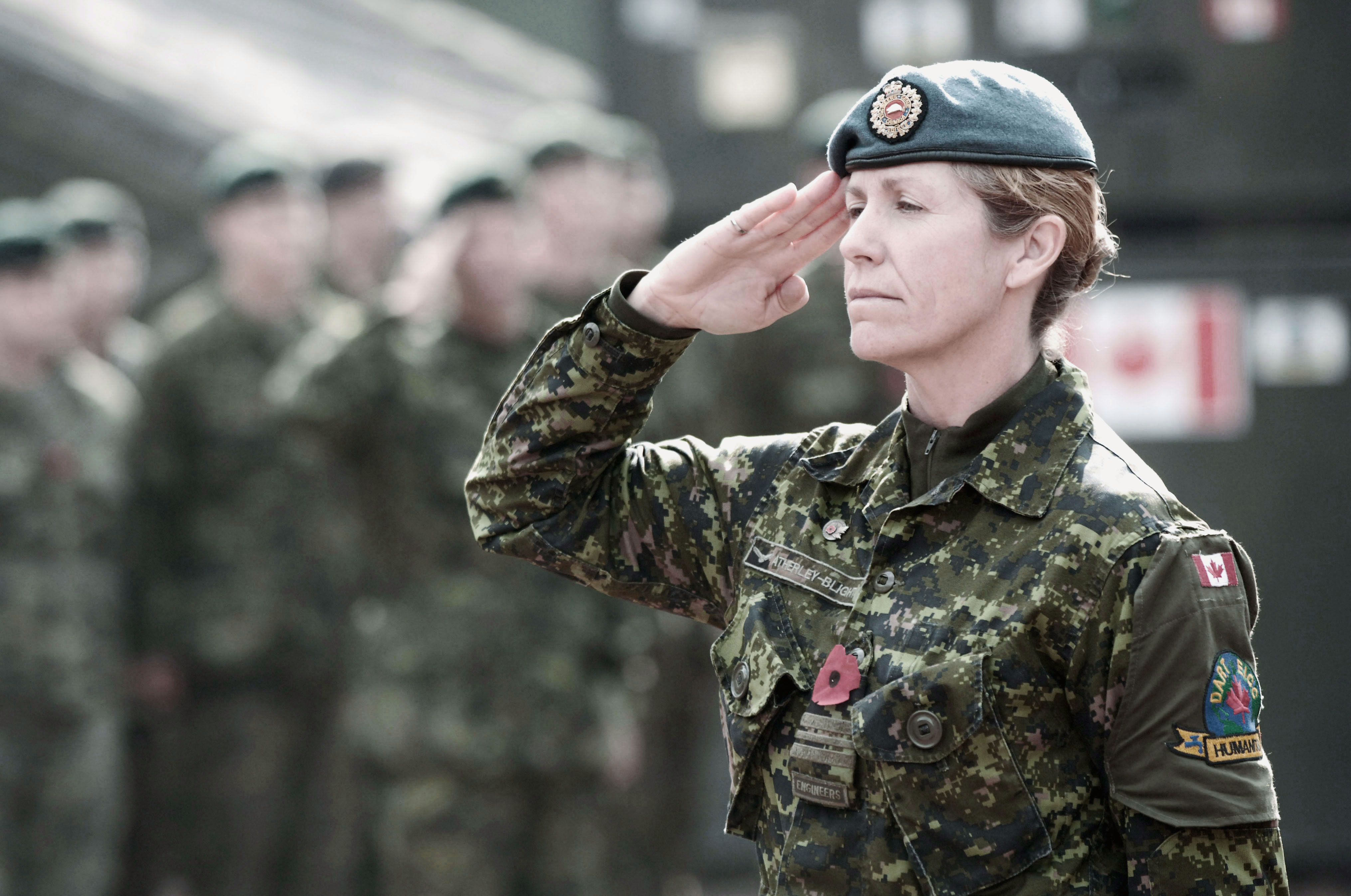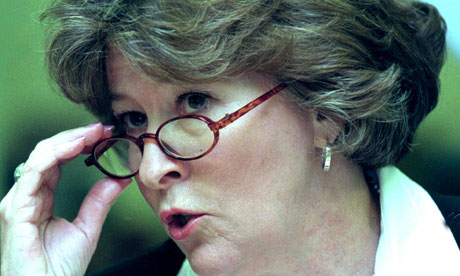Why We Shouldn’t Panic (Yet) About the Canadian Forces Reducing Recruitment Targets for Women
Earlier this week, it was announced that the Canadian Forces (CF) are slashing recruitment targets for women and visible minorities. The decision came after a 2012 defence audit that claimed that the established target was unrealistic. At first glance this decision seems like a setback for women’s representation in the Canadian military. However, upon further inspection of the actual audit, the reality may be less ominous. While it is disappointing that targets are being reduced, we should avoid getting too caught up in the numbers and instead focus on the specific positives and negatives uncovered by the audit.
Putting Things Into Perspective
The unfortunate truth is that the audit is probably correct in its analysis that the recruitment target established a few years ago was unrealistic. In 2004, a long-term representation goal for women was set at 19.5%. This was later updated in 2010 when the goal was increased to 25.1%. Reaching this level of representation would certainly require an enormous recruitment push.
[captionpix align=”left” theme=”elegant” width=”250″ imgsrc=”http://natoassociation.ca/wp-content/uploads/2013/08/caf_1001.jpg” captiontext=”A Canadian Forces recruitment poster featuring a female service member.”]
The 2012 defence audit assessed that this 25.1% target was artificially high due to a flawed workforce analysis methodology. The audit claims that employment equity stakeholders involved in establishing this benchmark were aware of its flawed nature and were largely unsatisfied with the final calculation. Moreover the audit emphasizes that achieving a recruitment target that would result in 25.1% long-term representation remains unachievable without the implementation of significant special programs. Despite the enormous recruitment push that would be required to achieve this level of representation, no such programs existed for women or visible minorities. This is one of the many reasons why the target does not match the current recruitment context.
The unattainability of the 25.1% number becomes especially clear when compared with the percentage of women that comprise similar militaries. In the UK, women make up 9.1% of the armed forces and in Australia the percentage of women in the military is 13%. Women currently represent 13.68% of the Canadian Forces. The United States military is slightly ahead of Canada at 14.5% female representation. France has the highest proportion of females of all European militaries at 15% representation.
Norway recently made the decision to extend its military draft to include women, in large part to reduce the gender disparity of its forces. However, even with the help of mandatory conscription, Norway’s recruitment target for women is to have them be 20% of the forces by 2020. Israel, another country that conscripts women into the armed forces, has a female representation of approximately 33%.
These figures help illustrate that meeting a recruitment target sufficient to reach a female representation of 25.1% would be a rather extraordinary feat. It is therefore important that those who are concerned about women’s roles in the Canadian Forces look beyond the raw numbers and focus on the specific characteristics of female participation in the military.
Canadian Service Women: Achievements and Challenges
The ban on Canadian women in combat was lifted in 1989 and the number of women participating in combat roles has gradually risen since then. Anecdotal evidence suggests that Canadian women have integrated reasonably well into the military. In 2010, Major Eleanor Taylor became the first female to lead a NATO combat unit in Afghanistan. Captain Jaime Phillips is a female artillery officer who has commanded Canadian, American, and Afghan troops in Afghanistan. She maintains that “her orders were always obeyed and she was never the subject of overt hostility.” Lt. Col. Shirley Robinson, a nurse with the Royal Canadian Air Force and later a consultant for the Canadian military, believes that the integration of women into combat positions has been largely positive.
However, the high rate of attrition amongst female service members remains an issue and some argue that military culture is still a barrier to female recruitment (only 2% of soldiers in combat roles are women). For instance, Walter Dorn, a professor of defence studies at the Royal Military College of Canada, argues that “there’s still a tendency for the white males to dominate in the Canadian Forces” and that the military must do more to change this culture.
Clearly, there is work that needs to be done to improve female representation in the Canadian military. It is not clear, however, that establishing ambitious targeting numbers – especially numbers that were calculated incorrectly – will achieve this end. Rather, the Canadian Forces should enact specific programs aimed at overcoming low female participation in the military. In fact, the defence audit clearly highlights that because the military achieved relative success in recruiting Aboriginals through their summer training programs, CF should implement a similar model for women.
Royal Military College professor Christian Leuprecht, who specializes in diversity within the Canadian military, expressed disappointment and concern over the news that CF was scrapping its female and visible minority recruitment targets. He believes that doing so “would create a sort of self-fulfilling prophecy by reducing the pressure to recruit more of each.” The issue with this argument, however, is that the Canadian Forces seem acutely aware that the targets that were initially set were unachievable. Recruitment officials in the military felt that this target was “forced upon them” and believe that they were doomed to fail. This precedent does not seem likely to inspire much enthusiasm. In fact, the percentage of female participation did not go up during the years that recruitment targets were set at 25.1% representation.
Moving Forward
Both the defence audit and officials in the CF largely agree that diversity in the military is important for ensuring the forces reflect Canadian society and values abroad. It is important to note that the defence audit goes beyond simply advocating that targets be recalculated. It suggests taking action by engaging in research to establish more realistic targets regarding female and visible minority representation in the armed forces. As a second step, it proposes that existing employment equity programs be improved and new ones added.
[captionpix align=”left” theme=”elegant” width=”350″ imgsrc=”http://natoassociation.ca/wp-content/uploads/2013/08/photo_1013278_resize.jpg” captiontext=””]
For the moment, it appears that the Canadian Forces are still committed to diversifying the military and further integrating women and minorities. Those in favour of these objectives should remain observant and, where necessary, constructively critical of how the CF pursues these goals. The defence audit revealed some information that may be cause for concern in the future. Most significantly, it highlighted the fact that several recruitment centres are closing “without any apparent compensatory approaches.” The impact that this may have on military recruitment is not yet known but is something that should be the focus of future studies.
Although the news that recruitment targets for women and visible minorities are being lowered was initially disappointing, a measured analysis of the defence audit reveals that we can remain cautiously optimistic about the future of women in the Canadian military. As long as the Canadian Forces continue to make the recruitment of women and minorities a priority, there is no reason to panic.




